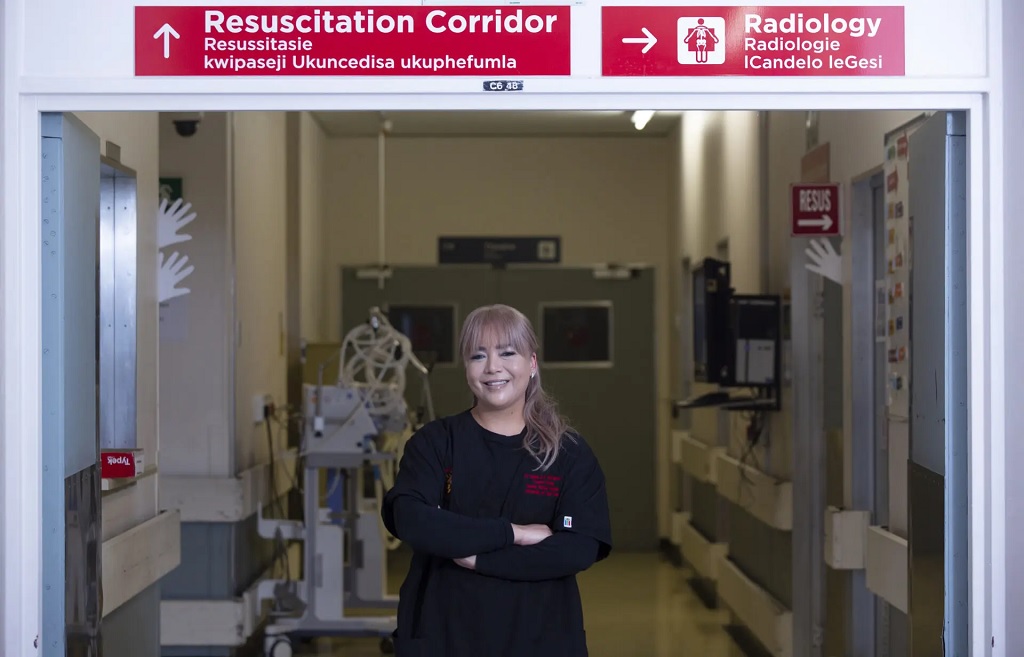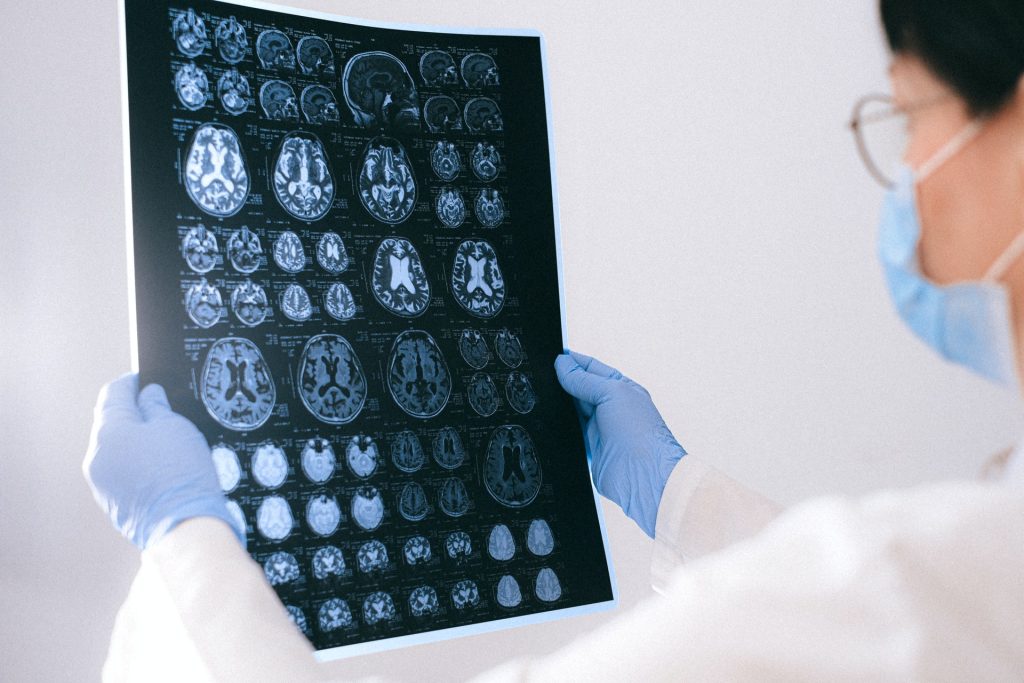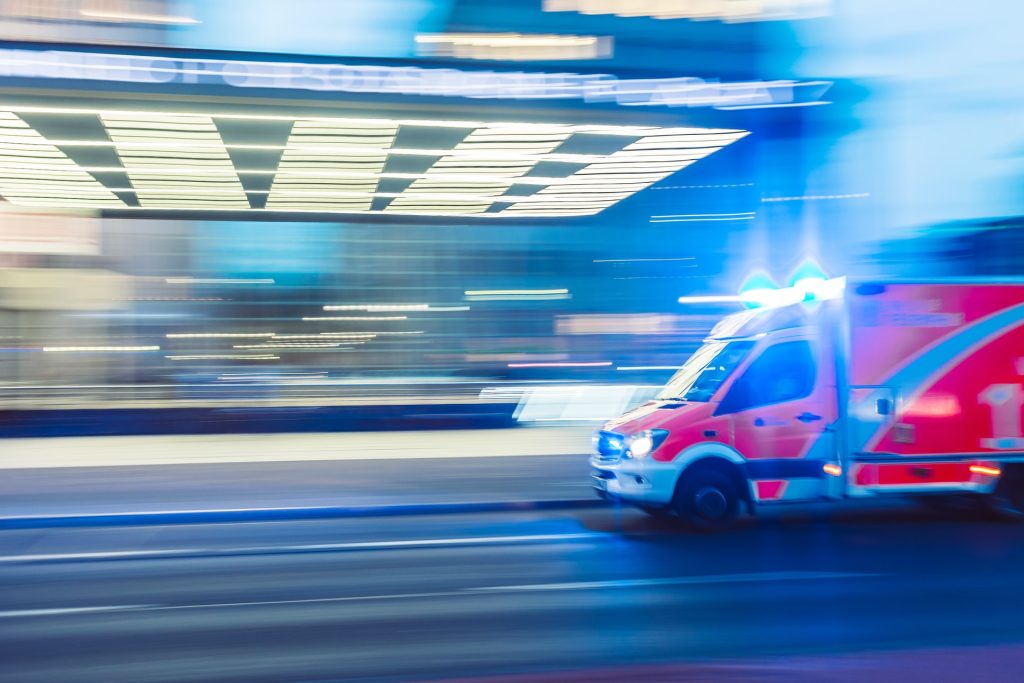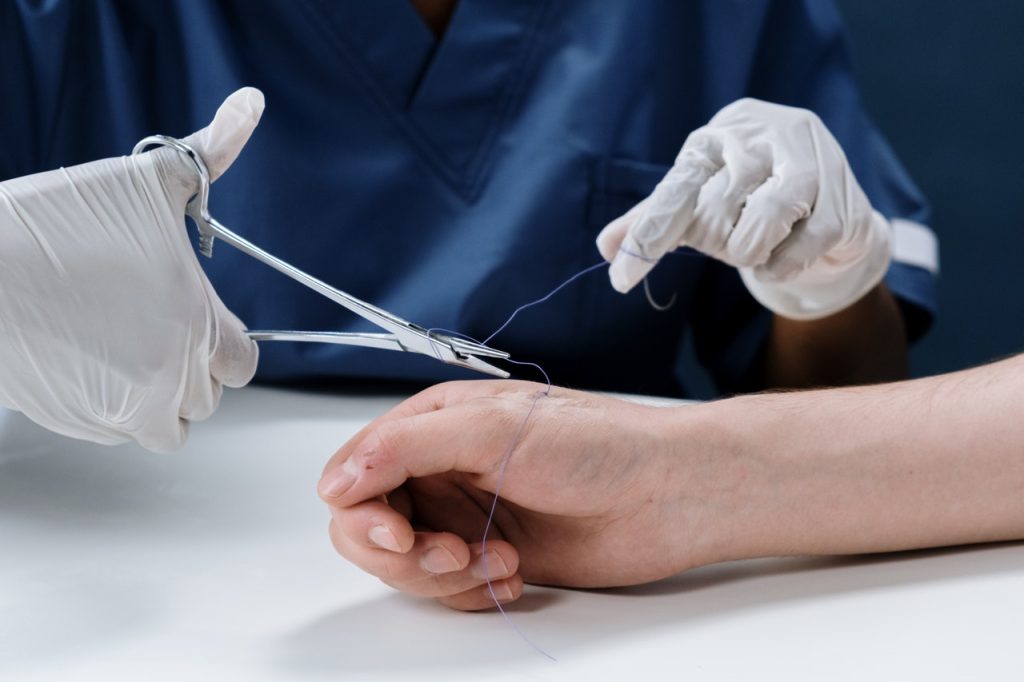Between Silence and Sirens: Cape Town Trauma Surgeon Dr Deidre McPherson’s Midnight Vigils

By Biénne Huisman
Groote Schuur Hospital in Cape Town has one of the busiest emergency centres in the Western Cape. As it turns to the public to raise R20 million for the opening of a new emergency centre, Dr Deidre McPherson chats to Spotlight about the hospital’s trauma frontline.
Deep into the night while most of Cape Town is asleep, trauma surgeon Dr Deidre McPherson slips into work scrubs, hitting the highway to Groote Schuur Hospital to save the lives of critically injured patients.
In a boardroom next to the hospital’s Trauma Centre, McPherson details her solitary early-morning drives along the deserted N1 highway to perform life-saving surgery on people hurt in road accidents, gang violence, and other incidents.
She says she is called out from her home in Bellville past midnight at least once or twice a week. “It’s a surreal feeling,” she says. “I mean driving alone while the rest of the world is sleeping. By now, my husband is used to me leaving at weird times and coming back at like 03:00 or 05:00.”
In South Africa, trauma surgery only became a defined sub-speciality in 2008, meaning a formal training pathway for trauma surgery as its own discipline was created. Trauma surgeons are trained to manage multi-system injuries.
McPerson explains: “We are there at the most crucial moments, when life hangs in the balance. For me, there is nothing more rewarding than seeing a patient arrive critically injured, and walk out the hospital three weeks later, back to their lives.”
R20 million to equip new emergency centre
A new state-of-the-art emergency centre, which includes a new trauma centre, is being constructed at Groote Schuur, beside the existing facility. While it is set to open in 2026, hospital executives are turning to the public for R20 million in additional funding to fit the new premises with upgraded equipment.
As part of the fundraising drive, healthcare professionals recently took journalists on a candid tour of the existing facilities. Inside, corridors are clean but with linoleum floors peeling in places; some patients on trolley beds are stationed against walls, indicating wards filled to capacity.
Just beyond a sign that reads “C14 Welcome to Trauma Centre” – with translations in Afrikaans and isiXhosa – McPherson points out the trauma centre’s resuscitation ward, which can hold six intubated patients, she says. One recent admission can be seen on life support.
Increased capacity and privacy for critically injured patients
McPherson says the new facility will have a more spacious assessment or triage area, where staff decide which patients require immediate life-saving care and which can safely wait.
She says the new trauma centre will expand capacity across all three colour-coded wards. The resuscitation ward (red) will increase from six to ten beds. “This is severe trauma, for example [patients involved in] a motor vehicle accident, with head injury, chest injury and fractures needing life support”. The intermediate ward (yellow) will increase from 12 to 16 beds. “This is moderate trauma, for example, [patients with] multiple fractures, but stable”. The minor ward (green) will increase from 12 to 14 beds. “This is minor trauma for example, [patients with] cuts, bites and bruises – the walking wounded”.
Through the public funding drive, they hope to upgrade the computer system, buy more mobile ventilators for critically injured patients, and get a new full-body X-ray machine for rapid imaging in seconds, which McPherson says is “critical for assessing multiple gunshot or high-impact injuries”.
She says that the centre’s current computer has been in use for over 15 years and frequently stalls. “Sandy, our secretary, is on the phone to IT every second week,” McPherson says, adding that it isn’t necessarily dangerous but that it’s very frustrating. “Time matters so much in trauma,” she emphasises.
In addition, there are lighting issues in some of the examination rooms, with doctors occasionally having to do sutures by headlamp or the flashlight on their phone, McPherson says.
A woman in a male dominated field
During our follow-up interview in the boardroom, McPherson’s gestures are soft, framing her words. Her eyes are level, her cadence precise and unaffected. At present, she is one of ten women trauma surgeons in South Africa’s public sector, compared to 22 men. She is the only woman of four trauma surgeons at Groote Schuur’s trauma centre, which is led by Professor Andrew Nicol.
“Surgery has always been male-dominated and even more so sub-specialties like trauma,” says McPherson. “I was discouraged from following this path by colleagues and even family. This is not a career for women, they said. What if I have a family? The hours are so unpredictable. And there are the violent things we see each day…”
But she was determined. For McPherson, it was a calling, a job she loves. “it doesn’t feel like work,” she says.
Road accidents and gang violence
On average, 1000 patients are admitted to Groote Schuur’s trauma centre per month. Critical injuries, particularly road accidents, spike around Easter, on public holidays, on pay day, and in December, she says. She suggests semigration to Cape Town has seen an additional traffic burden and increased road accidents. Another major contributing factor is accidents involving delivery motorcycle drivers.
In addition, August and September this year have seen a marked month-on-month increase in gunshot wounds, McPherson says, with up to three patients with firearm injuries admitted each day.
“On particularly violent days, that number can rise to as many as 10 patients in 24 hours,” she says.
“What is particularly striking is not just the frequency, but the severity. These are not single gunshot wounds – we often see patients who have sustained multiple injuries, sometimes up to 20 bullet wounds at once.”
This echoes damning murder statistics recently quoted in The Guardian, which notes six people aged from 19 to 25 shot dead over two days in Wallacedene and Eikendal, on the Cape Flats.
Responding, McPherson says: “Sadly what is described in The Guardian is not an isolated incident – it is our daily reality. At Groote Schuur Hospital, we feel that burden first-hand. Every day we are treating teenagers and those in their twenties – who should be building their futures, not fighting for their lives – in our resuscitation bays.”
The latest crime statistics from the South African Police Service lists four precincts on the Cape Flats among the country’s five police stations with the highest murder rates. From January to March this year, Delft had 66 murders, Mfuleni had 65, Nyanga had 63, and Philippi East had 59. This is topped only by Inanda in KwaZulu-Natal which had 74 murders. In each of the last three years over 25 000 people were murdered in South Africa.
This constant cycle of violence is devastating and disheartening, she says, particularly “the high rate of recidivism – when patients return again and again with new injuries”.
For McPherson, cases linked to gender-based violence are especially disturbing. “And yet, as trauma surgeons, we try to focus on what we can do in those critical moments: stop the bleeding, repair the injuries, and give our patients a second chance at life.”
Are there any solutions?
Ultimately, McPherson says the real solution to trauma lies “upstream” in prevention.
“This means tackling the drivers of violence: unemployment, poor housing, failing schools, and the lack of opportunities that trap so many young people in cycles of crime and despair. It also means building safer communities through stronger policing, a justice system that works, and meaningful gun control laws to reduce the number of firearms circulating in our neighbourhoods,” she says.
Then there is preventable road accidents.
“Road traffic injuries remain one of the leading causes of admissions to our unit. As we move into the festive season, I want to urge the public to take responsibility for one another: do not drink and drive, wear seatbelts, and slow down on the roads. These are simple actions that can save lives,” she says.
To this end, she points out the importance of South Africa’s “Arrive Alive” campaign which aims to decrease the number of lives lost on the country’s roads through raising public awareness of road safety. Western Cape officials estimate that 139 people died in road accidents in the province between 1 December 2024 and 11 January 2025, with 627 arrests made for drunk driving.
Childhood inspiration
Born in Bellville to parents who worked in education, the eldest of three sisters, McPherson’s interest in medicine started early, fuelled by a weekly booklet series called How My Body Works. “It was out every Friday, I couldn’t wait for it to arrive. These booklets sparked my fascination with biology and science and it has stayed with me ever since. I still have them at home, packed away in a box,” she says.
McPherson matriculated at Settler’s High School in Parow and studied medicine at Stellenbosch University. She completed her internship at Tygerberg Hospital with a community service year in Atlantis, on the West Coast, where she first saw “how daily violence devastates young people”.
A mother to three-year-old twins, a boy and a girl, McPherson scrolls on her phone to her WhatsApp profile picture, which features her children dressed up in tiny doctor’s scrubs – pink and blue – each with a tiny stethoscope. “It was ‘career day’ so we chose outfits that was easy,” she says, smiling.
McPherson, who also counts a PhD on her resume, says she has processed pangs of “mum guilt” for her children. “My husband has been a constant pillar of support,” she says.
“Plus, I am happy and fulfilled, my children are growing up with a happy mother – but yes, it’s a juggling act, sometimes I have to decide which ball to drop. Is it a rubber ball, that will bounce back, or a glass ball that might shatter?”
To relax, she says she likes to read “sappy romantic fiction” like novels by Danielle Steele.
On her future radar? Becoming a full professor.
In the meantime, McPherson says she believes every encounter is an opportunity to make a difference. “We don’t just treat the injuries, we also try to offer support and counselling, hoping that this time might change the trajectory of a life,” she says.
Republished from Spotlight under a Creative Commons licence.
Read the original article.










